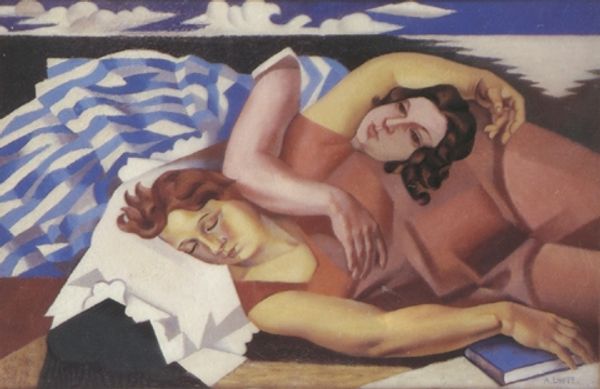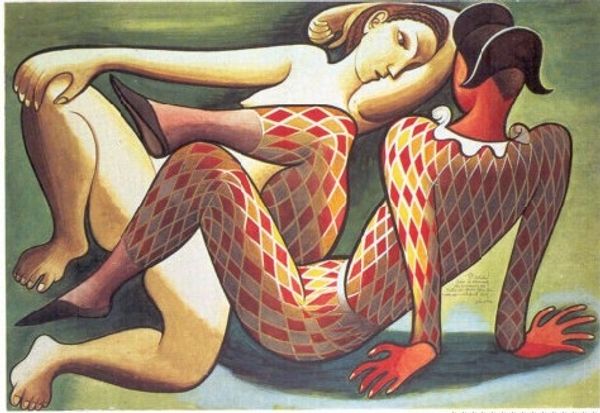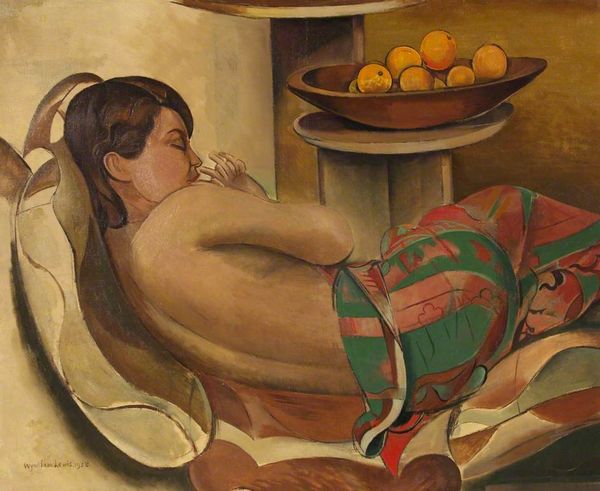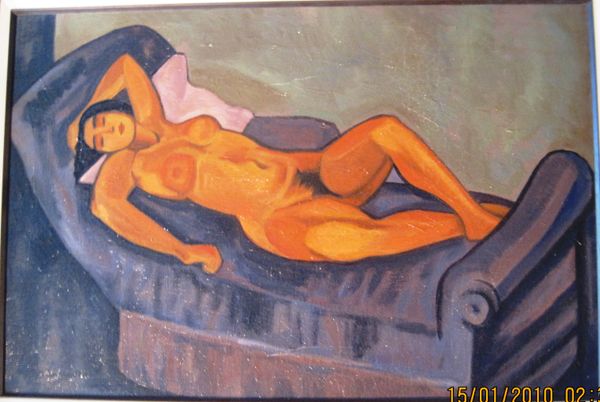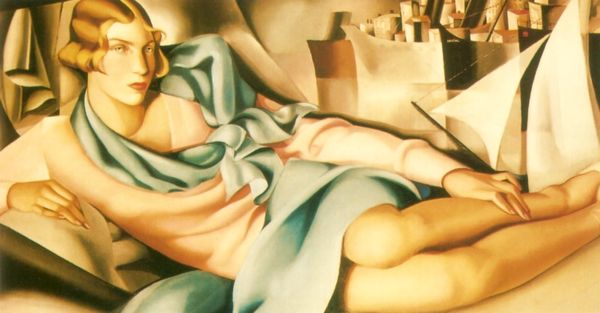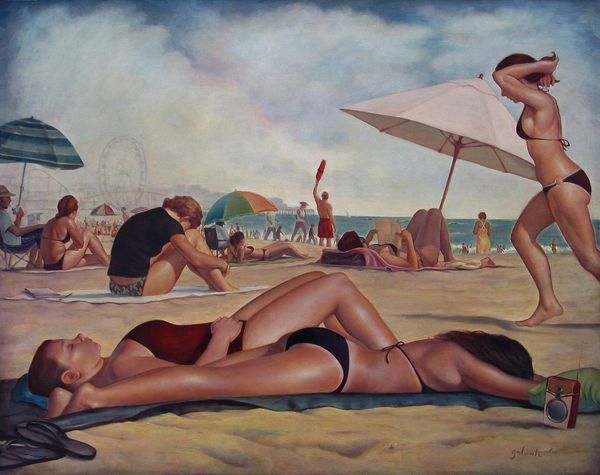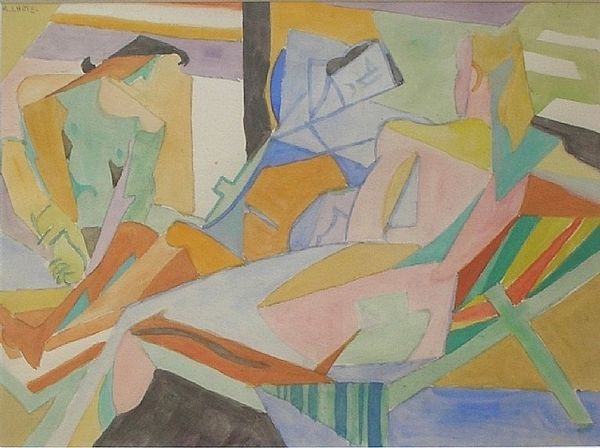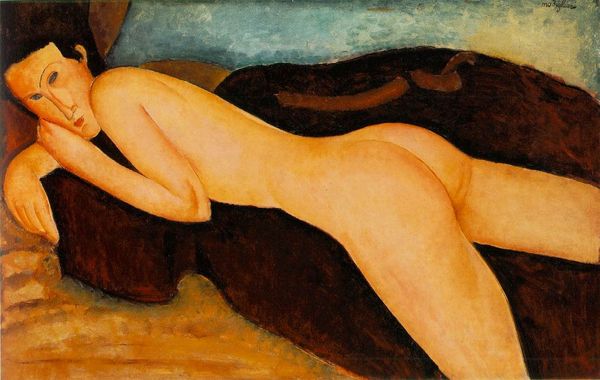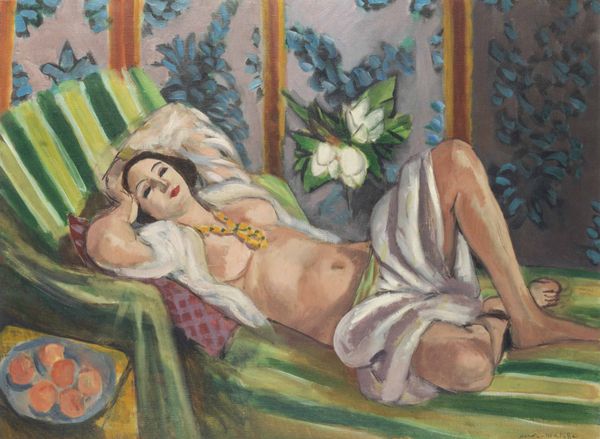
painting, oil-paint, mural
#
portrait
#
painting
#
oil-paint
#
landscape
#
figuration
#
oil painting
#
mexican-muralism
#
genre-painting
#
nude
#
mural
#
realism
Copyright: Diego Rivera,Fair Use
Curator: Diego Rivera painted "The Hammock" in 1956, rendering a domestic scene using oil paint. It displays two figures relaxing. The view seems to be from an interior out toward a distant landscape. Editor: What strikes me first is the atmosphere: lazy and languid, soaked in a tropical sun. There is a kind of tactile tension between the curves of the figures and the angular geometry of the hammock’s weave and that tiled floor. Curator: Rivera was deeply influenced by the mural movement and its socialist themes. In this smaller easel painting, we see his characteristic use of earthy colors and simplified forms, celebrating everyday life. Though less overt than his murals, it does idealize a kind of leisurely, almost pastoral existence. Editor: Leisure, yes, but who gets to enjoy that leisure is crucial to understand here. Rivera, despite his leftist leanings, often depicted women within these spaces of repose, reinforcing societal expectations of women as figures of domesticity and passive beauty. Note how their bodies are presented – ripe, full, almost sculptural. Curator: It’s true; these are not portraits in the traditional sense, but archetypes, meant to represent a broader idea of Mexican womanhood, linking it to ideas about national identity. Rivera’s artistic vision often romanticized indigenous and working-class life after the Mexican Revolution. This work also served as a contrast to industrialization happening elsewhere in the world. Editor: Yet, by stylizing and universalizing the figures, their individual experiences are obscured, flattening complexity into aesthetic appeal. While his intent might have been to honor them, one must question if in actuality he commodifies them by conforming to the male gaze. Curator: Looking at its place within art history, one also recognizes his technical skill—the way he handles light, the perspective he uses to give depth to what is quite a packed composition. He references classical paintings, whilst staying deeply rooted in his national cultural scene. Editor: Absolutely, technically brilliant! The painting’s idyllic feel is captivating, a reminder of art's ability to construct idealized narratives. However, critical engagement means constantly interrogating whose realities are amplified. Curator: "The Hammock" stands as an intriguing example of Mexican modernism; both technically impressive, while it presents a specific version of reality reflective of its time. Editor: And that reality, both its visible presence and implicit absences, keeps inviting questioning that transcends its aesthetic appeal.
Comments
No comments
Be the first to comment and join the conversation on the ultimate creative platform.

